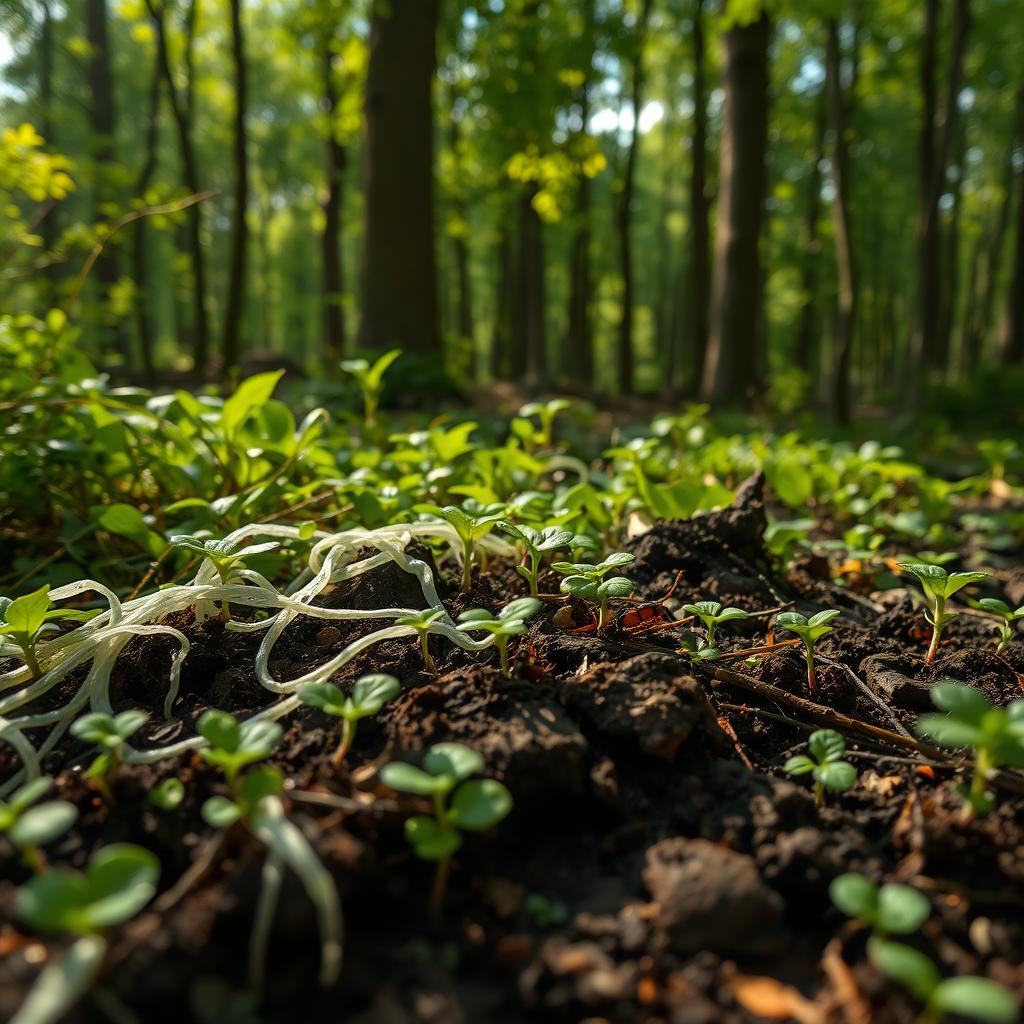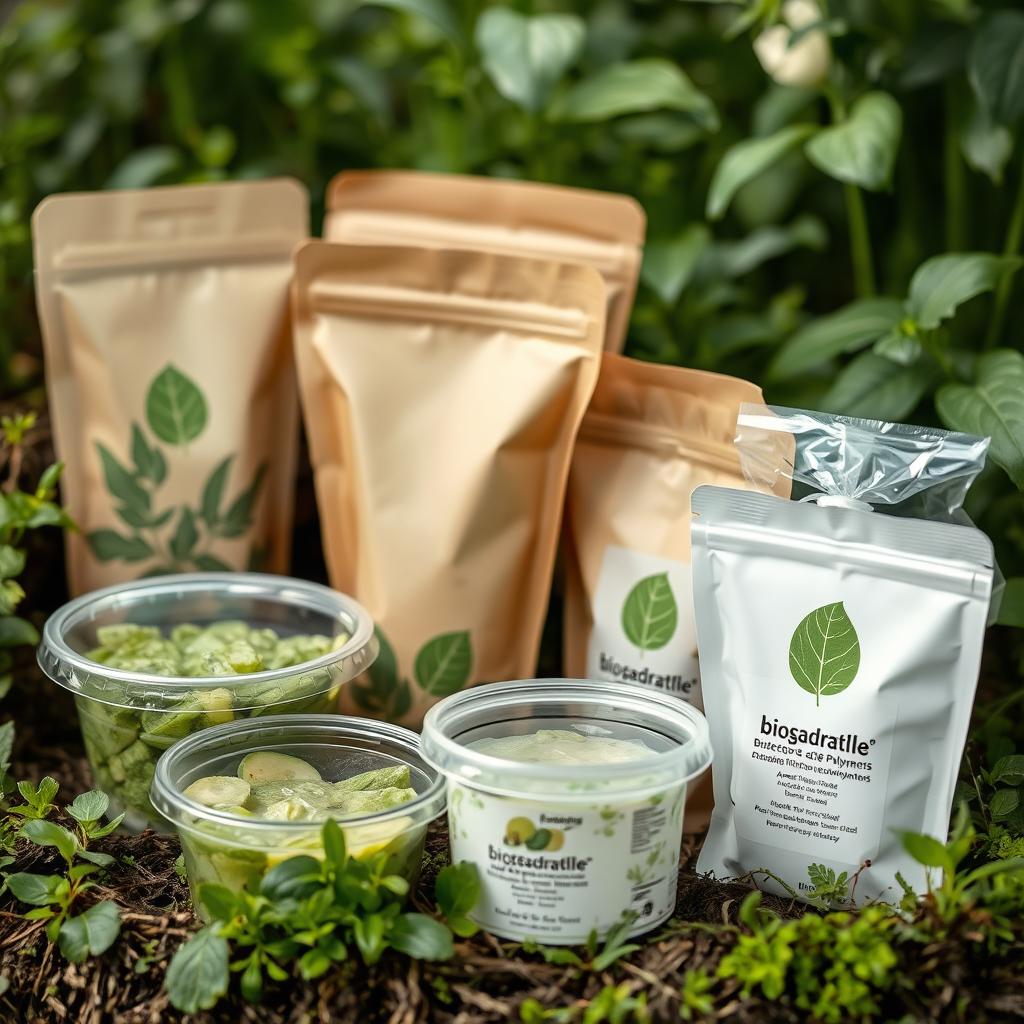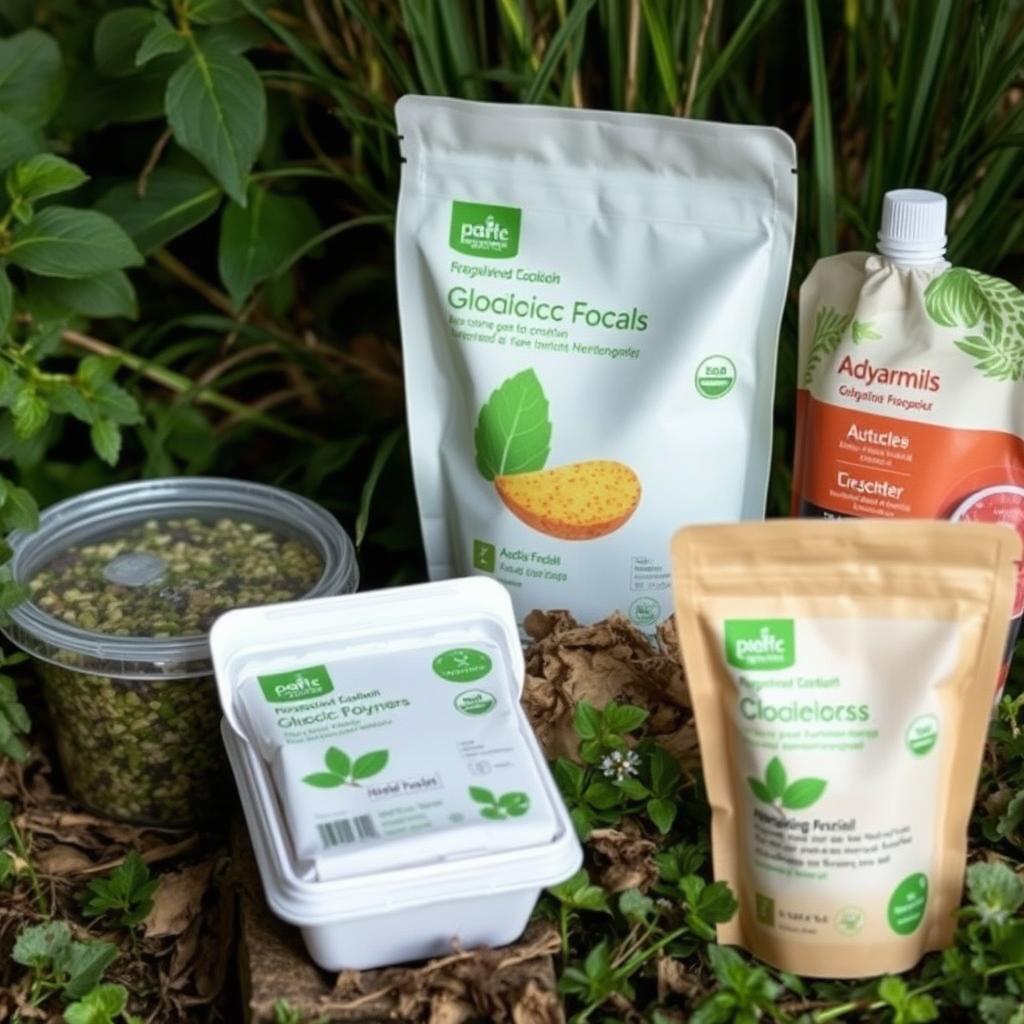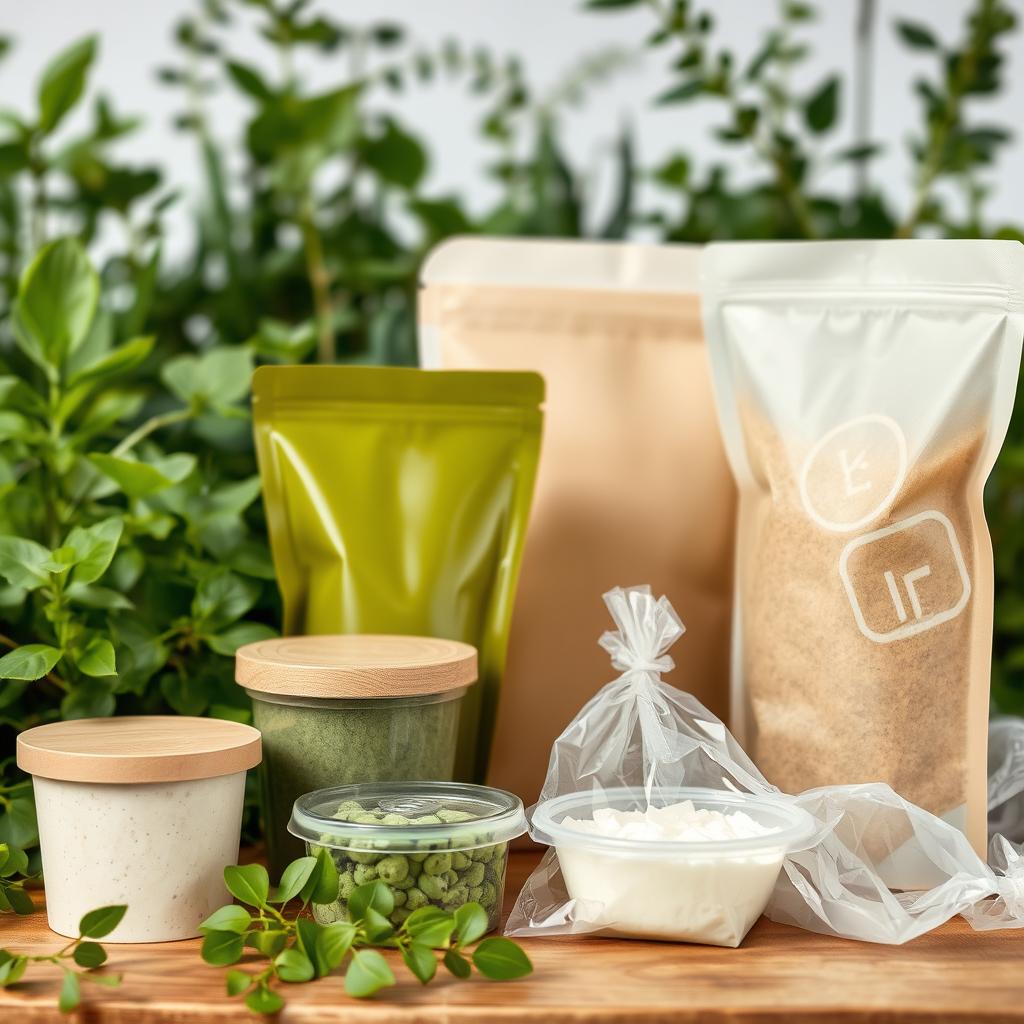Can a simple biodegradable polymer like polyglycolic acid really help our planet? The answer is yes. This polymer is getting attention for its role in a sustainable future. It’s a key player in fighting plastic pollution and environmental damage. This polymer is different from regular plastics. It’s being studied for its benefits. It could help reduce waste and make our environment healthier.
Click to use Silverigroup personal shopper services
Key Takeaways:
- The polymer of glycolic acid is a biodegradable material that can help reduce plastic pollution.
- This glycolic acid polymer has unique properties that make it suitable for a range of applications.
- The use of biodegradable polymers like polyglycolic acid can contribute to a more sustainable future.
- Researchers are exploring the potential benefits of the polymer of glycolic acid for environmental sustainability.
- The glycolic acid polymer is a promising alternative to traditional plastics.
Understanding the Polymer of Glycolic Acid
Polyglycolic acid is a synthetic polymer that has become popular lately. It’s made from glycolic acid and is known for being biodegradable and biocompatible. This makes it useful in many areas. The structure of polyglycolic acid is special. It has repeating units of glycolic acid. This gives it strong mechanical properties, making it great for different uses.
Chemical Structure and Properties
The chemical makeup of polyglycolic acid is key to its properties. It has ester linkages that allow it to break down easily. This is why it degrades into its basic units.
Natural vs Synthetic Production Methods
Polyglycolic acid can be made naturally or synthetically. Natural methods use microorganisms to ferment glycolic acid. Synthetic methods, however, are more common because they’re more efficient.
Click to buy citric acid from Silvairgroup
Key Characteristics
Polyglycolic acid is biodegradable, biocompatible, and has a high molecular weight. These traits make it perfect for medical uses like sutures and implants. It’s also good for the environment because it breaks down easily.
- Biodegradability: polyglycolic acid can easily degrade into its constituent units, reducing plastic pollution and promoting sustainability.
- Biocompatibility: polyglycolic acid is non-toxic and can be used in medical applications, such as sutures and implantable devices.
- High molecular weight: polyglycolic acid has a high molecular weight, making it a strong and durable material.
In conclusion, polyglycolic acid is a synthetic polymer with unique properties. Its biodegradability, biocompatibility, and strength make it ideal for medical uses and helping the environment.
The Environmental Crisis and Biodegradable Solutions
The world is facing a big environmental crisis because of too much use of non-biodegradable materials. This has caused severe plastic pollution. It harms wildlife, contaminates water, and damages ecosystems. To solve this, we need to use biodegradable solutions instead of non-biodegradable ones.
Biodegradable solutions offer many benefits:
- They reduce plastic pollution
- They protect wildlife
- They keep water clean
- They lower greenhouse gas emissions
Click to buy frozen a grade beluga fish from Silverigroup
For example, the polymer of glycolic acid can make many products, like packaging and medical devices. Using biodegradable materials like this can help fix the environmental crisis and make our future greener.

As we deal with the environmental crisis, we must focus on biodegradable solutions. Together, we can cut down plastic pollution, lessen the crisis, and make a better planet for our kids.
Biodegradability Features of Polyglycolic Acid
Polyglycolic acid is a biodegradable polymer that’s getting a lot of attention. It’s seen as a way to cut down on plastic pollution and help the environment. It breaks down naturally in the environment. The decomposition process of polyglycolic acid breaks it down into smaller pieces. These pieces can then be absorbed by microorganisms. This makes it a great way to reduce plastic waste.
Decomposition Process and Environmental Impact Assessment
The breakdown of polyglycolic acid has a big impact on the environment. It cuts down on plastic waste in landfills and oceans. It also lowers the risk of plastic pollution. Studies show it has a lower carbon footprint than traditional polymers.
Comparison with Traditional Polymers
Polyglycolic acid has many benefits over traditional polymers. It’s biodegradable, non-toxic, and can be composted. Its biodegradability features make it a better choice than plastics that take centuries to break down. Using polyglycolic acid can greatly reduce plastic pollution and help the environment.

Medical Applications and Their Environmental Benefits
Polyglycolic acid is used in many medical fields, like medical implants. It’s safe for the body and breaks down easily. This cuts down on medical waste and makes healthcare more eco-friendly. It also helps in creating drug delivery systems that release medicine slowly. This means fewer doses and less waste from drugs.
It’s also used in tissue engineering materials. This lets scientists grow new tissues to replace old or damaged ones. This method uses less synthetic materials, making it more sustainable. The main advantages of using polyglycolic acid in medicine are:
- It breaks down, reducing waste and helping the environment.
- It’s safe for the body, lowering the risk of bad reactions.
- It helps in making drug delivery systems that release medicine slowly.
Using polyglycolic acid in medicine can greatly reduce its environmental impact. It also encourages new ideas and sustainable practices. As research grows, we’ll see more uses of polyglycolic acid in medicine. This includes medical implants and tissue engineering materials.
| Medical Application | Environmental Benefit |
|---|---|
| Medical Implants | Reduced medical waste |
| Drug Delivery System | Minimized pharmaceutical waste |
| Tissue Engineering Materials | Promoted sustainability in tissue engineering |
Sustainable Manufacturing Processes
Polyglycolic acid production can be done in a way that’s good for the planet. These methods use less energy, create less waste, and cut down on carbon emissions. This approach helps companies leave a smaller mark on the environment.
Important parts of sustainable manufacturing are energy efficiency, waste reduction strategies, and carbon footprint analysis. Using these methods, companies can make polyglycolic acid without harming the environment too much. Some effective ways include:
- Optimizing production lines to reduce energy consumption
- Implementing recycling programs for waste materials
- Conducting regular carbon footprint analyses to identify areas for improvement
Companies that focus on sustainable manufacturing make a positive impact. This not only helps the planet but also improves their image. It’s a step towards a greener future. As more people want eco-friendly products, companies that go green will do well. By focusing on energy use, waste, and carbon, they can make polyglycolic acid responsibly. This supports their business and the planet.

Role in Reducing Plastic Pollution
Polyglycolic acid is a biodegradable material that helps reduce plastic pollution. It offers a sustainable option compared to traditional plastics. This is key in fighting plastic pollution, which harms our environment a lot. Reducing plastic pollution is vital to protect marine life and keep natural habitats safe. Here are some ways polyglycolic acid helps:
- It replaces traditional plastics in packaging materials.
- It provides biodegradable options for disposable products.
- It offers a sustainable choice for making textiles.
As we move towards more eco-friendly practices, polyglycolic acid’s role grows. By supporting biodegradable materials, we can make our environment cleaner. This benefits future generations.
Applications in Green Packaging Solutions
Polyglycolic acid is becoming a key player in green packaging solutions because it breaks down easily. This move towards eco-friendly packaging aims to cut down on plastic waste and help the environment.
Its role in food packaging innovations is especially important. It can replace harmful plastics in food packaging. This not only cuts down on waste but also makes food packaging safer and greener.
Benefits of Biodegradable Packaging
- Reduced plastic waste
- Promotes environmental sustainability
- Safer and more sustainable food packaging options
Polyglycolic acid is also making its mark in industrial packaging alternatives. It’s used for packaging non-food items like electronics and clothes.

Future of Sustainable Packaging
The use of polyglycolic acid in green packaging is set to rise. This is thanks to growing demand for eco-friendly products and packaging. As technology advances, we’ll see more creative uses of polyglycolic acid in industrial packaging alternatives and food packaging innovations.
| Packaging Material | Biodegradability | Sustainability |
|---|---|---|
| Polyglycolic Acid | High | High |
| Traditional Plastics | Low | Low |
Impact on Agricultural Sustainability
Agricultural sustainability is key in modern farming. Polyglycolic acid helps a lot in this area. It makes farming more eco-friendly by reducing waste.
Using biodegradable materials from polyglycolic acid helps farmers a lot. This way, they can lessen their impact on the environment. Agricultural sustainability is not just a trend. It’s essential for our planet’s future. Polyglycolic acid can help in many ways. Here are a few examples:
- It reduces plastic waste in farming.
- It promotes the use of biodegradable materials for mulch films and planting pots.
- It supports sustainable farming practices that lessen environmental harm.
The world faces big challenges like environmental degradation and climate change. The need for agricultural sustainability is huge. Polyglycolic acid is a step towards a greener future for farming and our planet.
Economic Viability and Market Adoption
Polyglycolic acid is gaining popularity for its economic viability and market adoption potential. It’s a biodegradable material that’s cheaper than traditional ones. This makes it a great choice for companies wanting to save money and be more sustainable.
Doing a detailed cost analysis is key to seeing the economic benefits of polyglycolic acid. It involves looking at production, material, and savings costs. This helps companies decide if using polyglycolic acid is right for them.

Key Factors Influencing Market Growth
- Increasing demand for biodegradable materials
- Government regulations and policies supporting sustainable practices
- Advances in technology and production processes
Experts say the market growth projections for polyglycolic acid look good. They predict a 10-15% growth rate each year. This is because more people want biodegradable materials and are focusing on sustainability. As the market changes, keeping an eye on economic viability and market adoption of polyglycolic acid is crucial.
Future Innovations and Research Directions
Polyglycolic acid is a versatile material with many uses. As research goes on, future innovations will come up. These will help grow different industries. The focus is on using it in biomedical devices, sustainable packaging, and more. The growth of emerging technologies is key to unlocking polyglycolic acid’s full potential. Companies investing in research can make new products. These products will use polyglycolic acid’s special features.
Some possible uses for polyglycolic acid include:
- Biomedical devices, like implants and sutures
- Sustainable packaging, like biodegradable containers and bags
- Textile production, for biodegradable fabrics
As people want more sustainable materials, polyglycolic acid will be important. By looking into its research directions and developing emerging technologies, companies can find new uses. This will drive innovation in polyglycolic acid.
Global Environmental Standards and Compliance
Companies worldwide are trying to lessen their environmental impact. They aim to meet global environmental standards. Using biodegradable materials like polyglycolic acid in products and packaging is a step in this direction. This approach helps cut down on waste and reduces environmental harm.
Following environmental rules is key for companies to avoid penalties and protect their image. Compliance with global environmental standards is possible through sustainable actions and eco-friendly materials. For instance, switching to polyglycolic acid packaging instead of traditional plastics is beneficial. Traditional plastics take ages to break down.
Benefits of polyglycolic acid include:
- Biodegradability: It naturally breaks down, reducing waste and protecting animals and plants.
- Renewable resources: Made from corn starch or sugarcane, it cuts down on fossil fuel use.
- Compliance with regulations: Using it helps meet global environmental standards, avoiding fines and reputation damage.
By adopting polyglycolic acid and following global environmental standards, companies can shrink their environmental footprint. This move not only helps the planet but also boosts the company’s image. It can also save costs over time.
| Material | Biodegradability | Renewable Resources | Compliance with Regulations |
|---|---|---|---|
| Polyglycolic Acid | Yes | Yes | Yes |
| Traditional Plastics | No | No | No |
Conclusion
The polymer of glycolic acid, known as polyglycolic acid (PGA), is a game-changer for our environment. It’s biodegradable and has many uses. This makes it a key player in fighting plastic pollution and promoting green practices. PGA is used in medical implants, drug delivery, and even in green packaging. It breaks down naturally, unlike traditional plastics. This makes it a vital part of moving towards a sustainable future. As we keep improving PGA technology, we’ll see more ways to reduce our environmental harm. By using this powerful polymer, we can make our planet greener and cleaner for future generations.
FAQ: How the polymer of glycolic acid can help the environment
What is the polymer of glycolic acid?
The polymer of glycolic acid, also known as polyglycolic acid (PGA), is a biodegradable synthetic polymer. It has gained attention for its unique properties and potential uses.
What are the key characteristics of the polymer of glycolic acid?
This polymer is known for being biodegradable, biocompatible, and strong. It’s made from glycolic acid through polymerization.
How does the polymer of glycolic acid help the environment?
It’s a biodegradable material that can reduce plastic pollution. It’s used in medical implants, drug delivery, and packaging. This makes it a sustainable alternative to non-biodegradable materials.
What are the medical applications of the polymer of glycolic acid?
It’s used in medical implants, drug delivery systems, and tissue engineering. These uses help reduce medical waste and promote sustainability.
How is the polymer of glycolic acid manufactured in a sustainable way?
It’s made using sustainable processes that focus on energy efficiency and waste reduction. These efforts lower its carbon footprint and minimize environmental impact.
How can the polymer of glycolic acid be used in green packaging solutions?
It can be used to create biodegradable packaging materials. This includes food and industrial packaging, replacing traditional plastic and reducing pollution.
What is the impact of the polymer of glycolic acid on agricultural sustainability?
It’s used in biodegradable mulch films and planting pots. These applications support sustainable farming and environmental stewardship.
What are the future innovations and research directions for the polymer of glycolic acid?
Researchers are exploring new technologies for its use. This includes biomedical devices, sustainable packaging, and other innovative applications that benefit the environment.
How does the polymer of glycolic acid comply with global environmental standards?
It’s a biodegradable material that helps companies meet environmental regulations. It supports global standards for sustainability and environmental protection.

